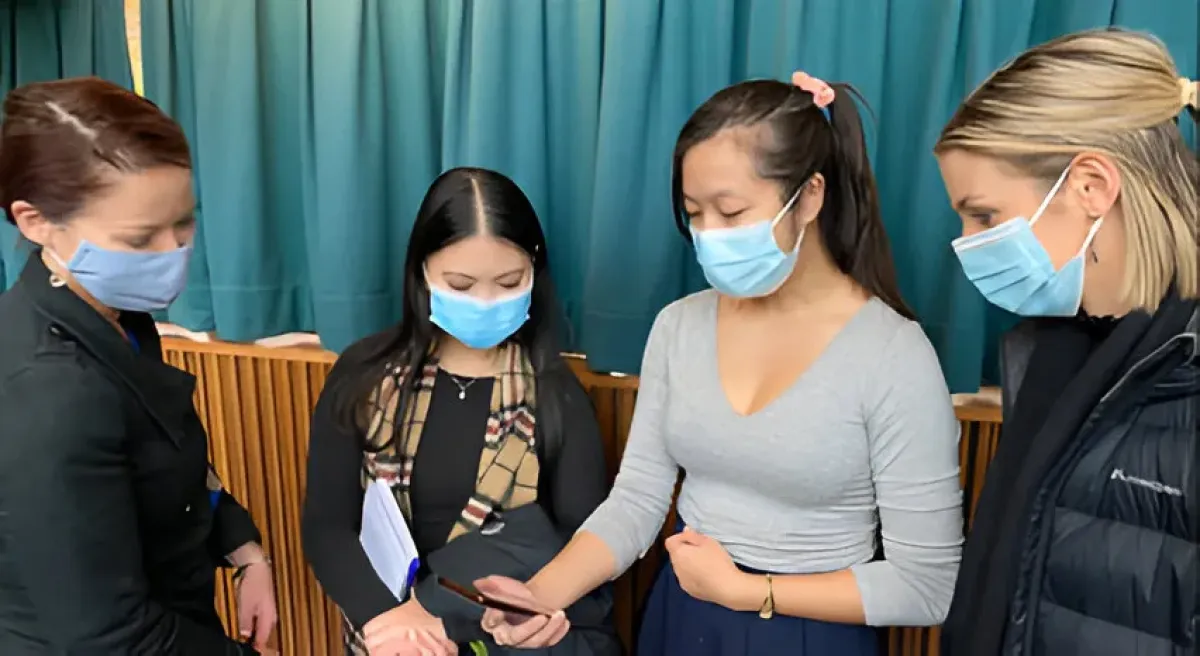
Top 3 tips for COVID-Safe events
As we emerge from lockdown and begin to open up across Australia, events are making a comeback – providing us with much needed and missed opportunities for face-to-face interactions, celebrations and collaborations. For more than a year, these things have only been possible online, yet even now, the pandemic has not gone away and it’s not exactly business as usual!
In these uncertain days, it’s essential to keep everyone safe while holding a successful and memorable event. So, here are our top three tips for running a COVID-Safe event:
1. Identify the potential COVID risks
Some events present a higher transmission risk than others. For example, outdoor vs indoor, local vs national guests, a one-off event vs multiple days or sessions, and allocated vs unallocated seating, to name a few. Conducting an initial COVID-19 risk assessment should be the first step in planning your event.
The outcomes of such an assessment will help us to determine event essentials such as the venue, number of attendees, catering, entertainment, event format and even the run sheet. We can also make an informed decision about whether a face-to-face, hybrid or virtual event will be the most suitable option for your business.
Trust us, based on eight years of experience – pandemic or not, taking the time to look at your goals and ascertain the best way to achieve them will save you headaches and issues further down the road!
We recommend using Future Events Lab to host an interactive event map – and highlighting areas that attendees can wash or sanitise their hands.
2. Follow the rules and requirements
In Victoria, we’re required to seek permission to hold any public event, such as an exhibition, festival or trade show, that involves more than 1,000 guests. In addition, some of our clients have other COVID rules that we must follow, such as whether their staff are allowed back on site or not. Regardless of the size or scale of the event, everyone must comply with all of the COVID-19 restrictions in place at the time, including venue density quotient, 1.5m social distancing, hand washing, and/or sanitising and mask-wearing.
As event producers, we’re also required to prepare and communicate a clear COVID-safe plan to everyone and keep records to support contact tracing of any guests, volunteers, contractors, and staff who attend or work at the event. There’s plenty of information and some great templates available on the Victorian Government website, which we use and customise, along with comprehensive checklists, for each event.
Remember, each state and territory has its restrictions and requirements that may change in any given week, so if you’re planning a national event, you may need to consider what this means for any interstate attendees or guests – especially if a lockdown is declared while they are travelling. For example, a recent Perth expo was shut down early due to the snap lockdown in Victoria, with many interstate exhibitors having to make a mad dash home before borders closed.
3. Have a backup plan
Live events will always be a little risky and unpredictable; from speakers not showing up to technical malfunctions, you never really know what’s going to happen on the day. A traditional event planning risk assessment will help you identify, think about and plan for potential issues, but as we’ve seen here in Victoria and around the country, snap lockdowns can be called at very short notice, and just when you think things are going well too! If you are planning a face-to-face or hybrid event, be sure to have a well thought out backup plan ready to implement.
There are a few options available, in case of a sudden lockdown, including:
- Rescheduling the event – it’s essential to work closely with the venue and any suppliers to keep this option open. In these uncertain times, your event producer and manager should work to ensure this option is included in your booking contract to incur minimal, if any, change-of-date fees.
- Moving the event online – this option is most suitable for hybrid events, where some attendees are already planning to participate virtually, and you’ve most likely already got an event platform in place ready to use.
While it’s not impossible to convert an entirely in-person event to an online one, it’s far more complex to implement and depending on how much notice is provided, may not be able to run on the same date.
- Cancelling the event – we always plan to avoid this costly and inconvenient option (by choosing option a) or b) above) however, it’s always good to consider the ‘worst case’ scenario, in these uncertain times and what that would mean for your event and business. Again, it’s important to ensure that venue and supplier contracts provide some leeway to cancel due to COVID-19 so that the biggest thing you have to worry about is the disappointment of cancelling your event rather than the thousands of dollars you’ll lose!
Like you, we’re eager to produce and attend more in-person events, but the reality is COVID-19 will continue to be a part of our lives for some time yet. As long as this is the case, online and hybrid events will remain the best option for ensuring we can keep everyone safe and healthy. So, if you go ahead with an in-person event, we recommend you follow our three tips above and that your event producer has the technical capabilities and experience to run a successful online event, just in case!
Having successfully delivered several hybrid and physical events since easing restrictions, we’re available to provide bespoke advice and recommendations. Get in touch to chat about any of your upcoming COVID-Safe event needs.